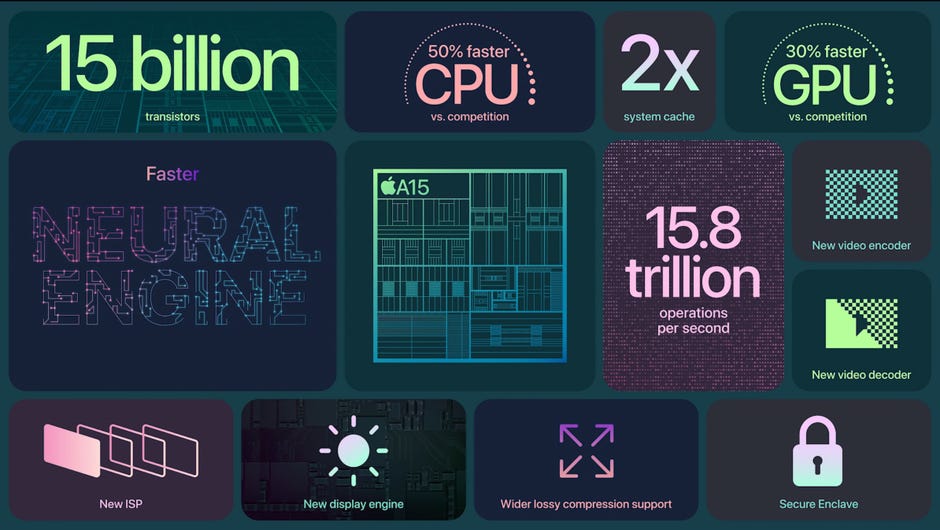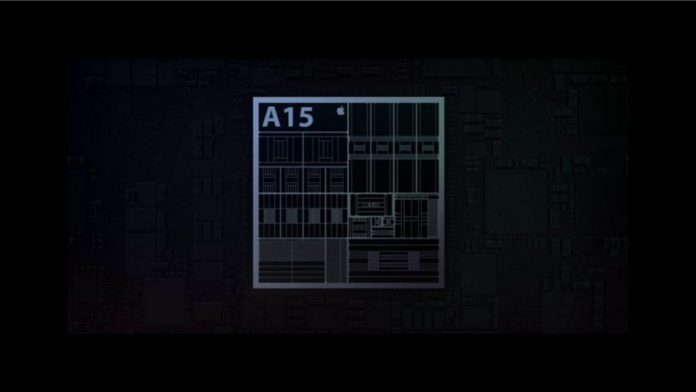After months of leaks and speculations, the iPhone 13 is finally here! Aiming to push the smartphone performances with each iPhone launch event, the new flagship iPhone 13 range has four models viz., iPhone 13, iPhone 13 Mini, iPhone 13 Pro, and iPhone 13 Pro Max. Powered by an unmatched performance of A15 Bionic, the Cupertino giant promises new exciting upgrades than its previous models.
While the firm did not specify how much better the A15 is than the A14, the A15, like its predecessors, features 6-core CPU: two high-performance processing cores for the most critical work and four high-efficiency cores for background activities that can operate without consuming as much battery power.

Interestingly, the A15 Bionic is built on Taiwan Semiconductor’s (TSM) state-of-the-art 5-nanometer (5nm) manufacturing process node, similar to Apple’s A14 Bionic SoC. The chip has up to 15 billion transistors, a 3.5 billion increase over the previous generation’s 11.5 billion. There’s also a 4-core GPU on the iPhone 13 Pro and Pro Max, which is increased up to 5-cores on the iPhone 13 Pro and Pro Max. This implies the iPhone 13 Pro will clock faster when it comes to running games and editing video. The A15 Bionic is “up to 50% quicker than the competitors,” according to Apple VP Hope Giles.
A 16-core “neural engine” on the new chip is added for speeding up artificial intelligence activities. This is helpful for a growing number of activities, such as creating Siri’s synthetic voice, identifying information in images, concentrating on faces in photos, support of features like Live Text in Camera in the new iOS 15, and unlocking your phone using Face ID. Despite having the same 16 cores as the A14 processor, the A15 boosts AI operations from 11 trillion per second last year to 15.8 trillion with the A15. This enables A15 to run powerful CoreML and AR modeling smoothly.

In terms of video, the A15 Bionic supports Apple’s new ProRes mode, which lets you shoot in 4K at 30 frames per second. A new camera system, combining a new 12MP ultrawide camera and a shifting sensor from the previous generation Pro Max series, is also powered by the Bionic.
Apart from that, A15 includes a new image signal processor, 2x system cache, a secure enclave, a new display engine, a new video encoder & decoder, and improved compression are all included in the chip. The major advancements to the next-generation ISP provide improved noise reduction and tone mapping. It also allows for a 28% brighter display.
Read More: Apple Anticipated AR/VR Headset may Require an iPhone connection
According to benchmark leaks, for GFXBench Manhattan 3.1, the A15 Bionic peaks at 198 FPS, outperforming its competitors. After a second run-through of the benchmark, framerates decrease to between 140 and 150 FPS, suggesting that the A15 Bionic will be throttled under prolonged stress. However, A15 Bionic still gives better performance compared to A14.
Overall A15 Bionic does bring interesting capabilities on board for the new iPhone 13 range. It will be quite interesting to watch how it fares against its upcoming competitor Qualcomm Snapdragon 898 SoC.


